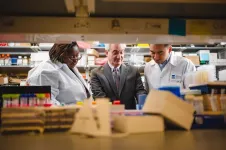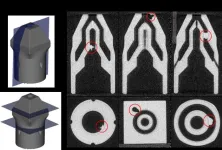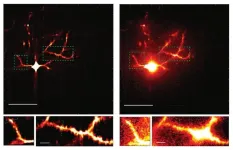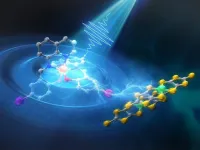(Press-News.org) PHILADELPHIA — (June 04, 2024) — Advanced clear cell renal cell carcinoma (ccRCC) is a deadly form of kidney cancer with few treatment options; even with new immunotherapies, only around one in 10 patients ultimately survive.
Antibody therapies called bispecific T cell engagers (BTEs) have emerged as effective treatments for some blood cancers but have been more difficult to develop for solid tumors. While clinically successful, first-generation BTEs suffer a short half-life. Now, Wistar scientists have built upon BTE technology to develop new and improved recombinant and synthetic DNA versions of therapeutic antibodies that target CA9, called Persistent Multivalent T Cell Engager (CA9-PMTE), that shows promise in pre-clinical models as a potent, long-lasting treatment against ccRCC.
In this study, the researchers also demonstrated that the more potent therapy could be delivered using synthetic DNA, which allows therapeutic production directly in patients. “The big takeaway is that there may one day be a promising new therapy for kidney cancer that has a mechanism of action that would be compatible for combination with checkpoint inhibitors, which is the current therapy of choice for this type of cancer,” said first author Ryan O’Connell, a predoctoral trainee in the Weiner lab at The Wistar Institute’s Vaccine & Immunotherapy Center. “What’s more, this improved bispecific antibody is outperforming the traditional bispecific antibodies in our studies, both in efficacy for treating ccRCC and in the approach’s ability to last much longer in the body, thus potentially being treatment-sparing.”
One reason clear cell renal cell carcinoma is so difficult to treat is because it is a so-called “cold” tumor — one in which cancer cells are unrecognizable by immune cells. This means that killer T-cells — a type of immune cell that seeks out and destroys diseased cells and cancers — are unable to recognize the tumor cells. As a result, immunotherapies that work by enhancing the T cells’ killing potency without improving their ability to bind to their targets are less effective against cold tumors.
These new forms of bispecific T cell engagers overcome this problem by functioning like “double-sided tape,” O’Connell explains. One side of the drug molecule binds to the T-cell, while the other side is engineered to bind to the specific type of tumor cell being treated; these molecules are “bispecific” because each end of the molecule is specific to one of two targets, the T cells and the cancer cells. This empowers the T-cells to attack and kill the cancer — even in cold tumors — by supplementing their ability to bind to the tumor.
But while BTEs are a promising new therapy for many difficult-to-treat cancers, they do have some limitations, including a short half-life (which is how long it takes for the active dose of a drug in one’s body to decrease by 50%). Most BTE drugs break down quickly, sometimes within a matter of hours, which means they are only effective for a short time.
In preclinical models, the team tested the efficacy of novelly designed anti-ccRCC BTE variants developed to enhance the interactions between T cells and the targeted cancer. These were developed to be delivered using synthetic DNA technology — a method of delivery that allows the body to assemble the desired drug design from DNA-based code themselves. The researchers compared traditional BTEs with a newer format design termed persistent BTEs (PBTEs), which have a longer half-life but use the same targeting system as older BTEs. They found that, while the initial PBTEs did last longer than the traditional BTEs, the new design reduced the overall anticancer potency.
The research team then created a new molecule by taking an existing PBTE and adding additional binding domains to better “see” and bind to the cancer. This novel, alternative design — called a persistent multivalent T cell engager (PMTE) — proved to be highly potent while also maintaining a longer half-life than the traditional BTE design.
Senior author David Weiner, Ph.D., executive vice president of The Wistar Institute and director of the Vaccine & Immunotherapy Center, said the new format represents the potential for an important new tool for enhancing cancer therapy.
“Bispecifics in general are an important technology that offer significant advantages in on-target anticancer potency,” he says. “The new PMTEs appear not only more effective at binding to tumor cells and killing the cancer, but they also require a much lower dose and, we have reason to believe, a lower frequency of therapy — which could potentially translate to improved outcomes and a better patient experience at a lower cost.”
The researchers are now studying these new PMTEs in combination with other immunotherapies as well as expanding designs to additional difficult-to-treat cancers.
Co-authors: Ryan P. O’Connell and Daniel Park of The Perelman School of Medicine at the University of Pennsylvania and The Wistar Institute; Kevin Liaw, Pratik S. Bhojnagarwala, Devivasha Bordoloi, Nicholas Shupin, Danie Kulp, and David B. Weiner of The Wistar Institute; Nils Wellhausen of The Center for Cellular Immunotherapies at the Perelman School of Medicine; Carl H. June of The Center for Cellular Immunotherapies at the Perelman School of Medicine and The Parker Institute for Cancer Immunotherapy at The University of Pennsylvania; and Chris Chuckran of LUMICKS
Work supported by: National Institutes of Health grants T32 CA11529915 and P30 CA010815; The Jill and Mark Fishman Foundation; the W.W. Smith Charitable Trust; and Inovio Pharmaceuticals.
Publication information: “Format-tuning of in vivo-launched bispecific T cell engager enhances efficacy against renal cell carcinoma,” published in Journal for Immunotherapy of Cancer (JITC)
ABOUT THE WISTAR INSTITUTE
The Wistar Institute is the nation’s first independent nonprofit institution devoted exclusively to foundational biomedical research and training. Since 1972, the Institute has held National Cancer Institute (NCI)-designated Cancer Center status. Through a culture and commitment to biomedical collaboration and innovation, Wistar science leads to breakthrough early-stage discoveries and life science sector start-ups. Wistar scientists are dedicated to solving some of the world’s most challenging problems in the field of cancer and immunology, advancing human health through early-stage discovery and training the next generation of biomedical researchers. wistar.org.
END
Wistar scientists develop novel antibody treatment for kidney cancer
2024-06-04
ELSE PRESS RELEASES FROM THIS DATE:
Virus that causes COVID-19 can remain in sperm for 110 days after infection
2024-06-04
Researchers at the University of São Paulo (USP) in Brazil have shown for the first time that SARS-CoV-2, the virus that causes COVID-19, can remain in the sperm of patients for up to 90 days after hospital discharge and up to 110 days after the initial infection, reducing semen quality. The study is reported in an article published in the journal Andrology. The authors suggest that people who plan to have children should observe a period of “quarantine” after recovering ...
Researchers use machine learning to detect defects in additive manufacturing
2024-06-04
Researchers at the University of Illinois Urbana-Champaign have developed a new method for detecting defects in additively manufactured components.
One of the most important tasks in any factory is to determine whether a manufactured component is free of defects. In additive manufacturing (3D printing), it can be particularly challenging to find defects, because additive manufacturing can make components that have complex three-dimensional shapes and important internal features that are not easily observed.
The novel technology uses deep machine ...
Rare disease’s DNA-damaging mutation could have consequences for more common conditions
2024-06-04
TREX1 is a gene that is supposed to direct the maintenance of the entire body’s DNA, but new research shows that when people are born with mutated TREX1, it causes catastrophic damage to the DNA over time, resulting in a deadly rare disease called retinal vasculopathy with cerebral leukoencephalopathy (RVCL). Published in Nature Communications, the research was led by teams at the Perelman School of Medicine at the University of Pennsylvania and the Brain Research Institute at Niigata University in Japan.
While it was already known that a mutation in TREX1 was behind RVCL, the mechanism by which ...
Exploring three frontiers in marine biomass and blue carbon capture
2024-06-04
A new study offers first-time insights into three emerging climate innovations to safeguard or increase the carbon naturally captured by ocean and coastal ecosystems: rapid interventions to save the Great Barrier Reef, satellite-tracked kelp beds in the deep ocean, and seagrass nurseries in the United Kingdom. The research, published in Environmental Science & Policy and co-authored by leading climate scholars at Boston University, Aarhus University, and the University of Sussex Business School, advances knowledge of understudied interventions in marine ...
Microscope system sharpens scientists’ view of neural circuit connections
2024-06-04
The brain’s ability to learn comes from “plasticity,” in which neurons constantly edit and remodel the tiny connections called synapses that they make with other neurons to form circuits. To study plasticity, neuroscientists seek to track it at high resolution across whole cells, but plasticity doesn’t wait for slow microscopes to keep pace and brain tissue is notorious for scattering light and making images fuzzy. In a paper in Scientific Reports, a collaboration of MIT engineers and neuroscientists describes a new microscopy system designed for fast, clear, and frequent imaging of the living brain.
The system, ...
VHIO researchers demonstrate the utility of high-sensitivity liquid biopsy to predict and monitor response to immunotherapy
2024-06-04
The liquid biopsy technique applied in this work is based on the sequencing of the entire tumor genome from 138 patients and the monitoring of mutations in the blood. This approach achieves high sensitivity in detecting the tumor signal in the blood (1/1,000,000 DNA molecules), and the patterns found reflect how patients respond to immunotherapy.
This study is part of the Comprehensive Program of Cancer Immunotherapy and Immunology (CAIMI) at VHIO, funded by the BBVA Foundation, and is co-led by Dr Rodrigo Toledo, head of the Biomarkers and Clonal Dynamics Group at the Vall d’Hebron Institute of Oncology (VHIO), ...
Muscle disorder caused by key protein mutations uncovered in new study
2024-06-04
A recent study has found that the SMCHD1 protein plays a key role in controlling how genes are processed, which affects the progression of Facioscapulohumeral Muscular Dystrophy (FSHD). This discovery about SMCHD1's function in gene regulation is important because it opens new possibilities for developing targeted therapeutic strategies to combat the disease. By understanding more about how SMCHD1 works, scientists can explore new ways to fight the disease.
A recent study by MD-PhD student Eden Engal under the guidance of Dr. Yotam Drier and ...
Observing ultrafast photoinduced dynamics in a halogen-bonded supramolecular system
2024-06-04
Researchers uncover how the halogen bond can be exploited to direct sequential dynamics in the multi-functional crystals, offering crucial insights for developing ultrafast-response times for multilevel optical storage.
Halogen bonds are intermolecular interactions that arise from the attraction between a halogen atom (group 17 elements in the periodic table) and another atom with lone pairs, more generally a molecular entity with high electron density. Understanding the distinctive and highly directional nature of halogen bonds is crucial for crystal engineering and studying ...
USPSTF recommendation statement on interventions to prevent falls in community-dwelling older adults
2024-06-04
Bottom Line: The U.S. Preventive Services Task Force (USPSTF) recommends exercise interventions to prevent falls in community-dwelling adults 65 years or older who are at increased risk for falls. The USPSTF recommends that clinicians individualize the decision to offer multifactorial interventions to prevent falls to community-dwelling adults 65 years or older who are at increased risk for falls. Existing evidence indicates that the overall net benefit of routinely offering multifactorial interventions to prevent falls is small. When determining ...
ASCO: Proton therapy demonstrates advantages in Phase III head and neck cancer trial
2024-06-04
ABSTRACT 6006
CHICAGO ― According to preliminary data from a multi-institution Phase III trial led by researchers at The University of Texas MD Anderson Cancer Center, intensity modulated proton therapy (IMPT) achieved similar clinical outcomes and offered significant patient benefits when compared to traditional intensity modulated radiation therapy (IMRT) as part of chemoradiation treatment for patients with oropharyngeal (head and neck) cancer.
The results were presented today at the 2024 American Society of Clinical Oncology (ASCO) Annual Meeting by Steven Frank, M.D., professor of Radiation Oncology and executive director of the Particle ...





